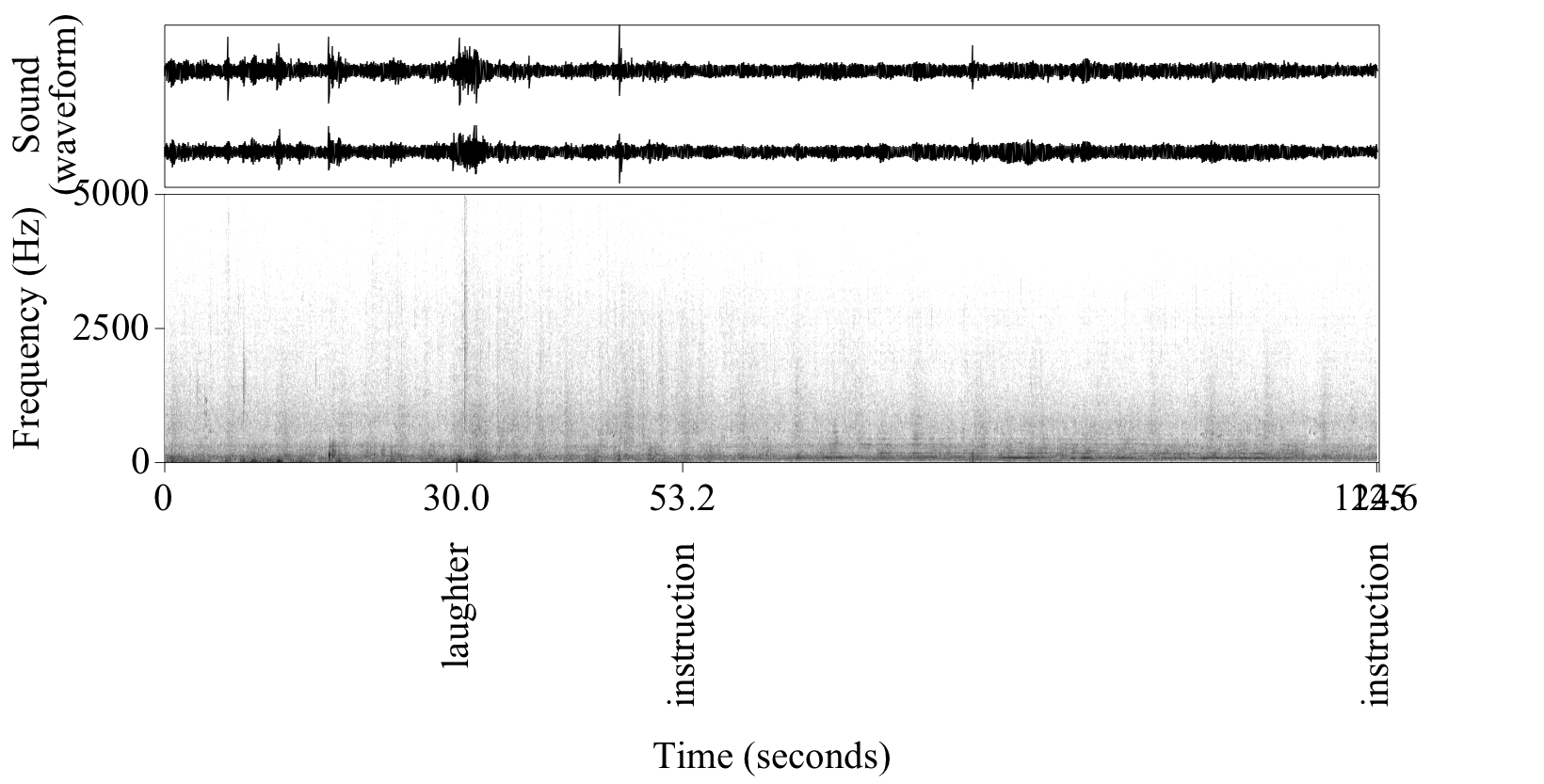
Loading map...

The Rick and Susan Sontag Center for Collaborative Creative, known as the Hive, is a space on Pomona devoted to promoting collaboration and creative, nontraditional learning. This is reflected in its physical image, as well as its soundscape.
The building has a ground floor with two large and connected central rooms, one of which holds classes, the other serving more as a communal gathering space, with couches, tables, and whiteboards. All Hive spaces are remarkably rearrangeable. Overlooking these central rooms is the second floor – really more of a balcony. Since the main first floor rooms are open at the top to the balcony, it’s easy to hear what’s going on in there, and even join in.
In its efforts to bring collaborative creative to the 5Cs, the Hive hosts academic classes with collaborative focuses, helping professors bring those qualities to their courses. Hive classes are characterized by their groupwork and discussion. This specific recording is of the Human Centered Design class, a class that had been practicing how to tell and how to listen to others’ stories for months when the recording was taken.
This recording was captured during the Human Centered Design Class (~2PM) on Wednesday, 11/20. The class was taking place in the first room, and the recorder was placed on the floor of the balcony, in the alcove closest to the classroom, and angled towards it. During the recording, the class was performing a warmup of sharing “Lemonade Stories”.
The soundscape was interesting as an observer, but it seems as though participants would experience it differently. From my second floor vantage, I could hear everything, but I got a muddled burble of conversation as a keynote[1], rather than coherent speech as signal[2]. Despite not being able to pick out individual speech most of the time, laughter came across pretty clearly a couple times, signaling that the community has a value on play and humor within their work and stories. In addition, students were clearly listening for the signal of the instructor’s instructions, as the sound shifts gradually when she tells them to switch (53), and stop (120). I wouldn’t say that any of these sonic qualities are particularly unique to this soundscape, but they do seem typical of collaborative spaces – conversation is necessary for collaboration, after all.
[1] In the field of Sound Studies, a “keynote” sound is a background aspect of a soundscape, that doesn’t need conscious attention, such as a low hum. The term is introduced in R. Murray Schafer’s piece, “Soundscapes and Earwitnesses,” reprinted in Hearing History: A Reader, ed. Mark M. Smith (Athens: University of Georgia Press, 2004), 100-101.
[2] In Sound Studies “signal” refers to a sound that needs to be consciously attended to – a “foreground” sound. The term is introduced in R. Murray Schafer’s piece, “Soundscapes and Earwitnesses,” reprinted in Hearing History: A Reader, ed. Mark M. Smith (Athens: University of Georgia Press, 2004), 100-101.